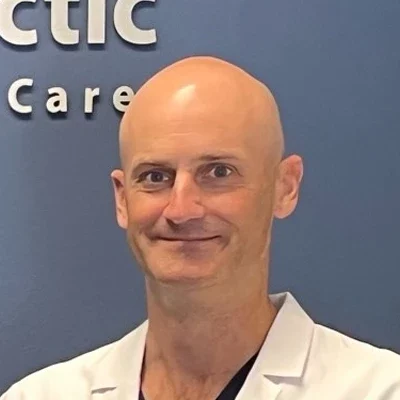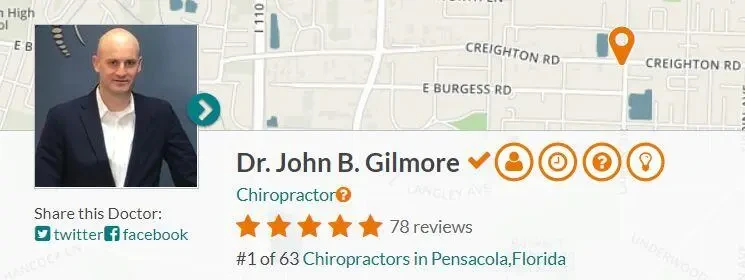The Chiropractic Advantage
Providing Quality Chiropractic Care in Pensacola, FL
New Patient
special offer
Gilmore Chiropractic
CHIROPRACTOR Pensacola FL
Dr. J. Blake Gilmore was born and raised in Pensacola, FL. He received a Bachelor of Science in Biology from Florida State University. After seeing the benefits of chiropractic care first hand, Dr. Gilmore decided he wanted to become a chiropractor. He went on to Southern California University of Health Sciences, where he earned his Doctor of Chiropractic Degree. After practicing chiropractic in Southern California, Dr. Gilmore returned home to Pensacola FL and opened Gilmore Chiropractic. He has also received specialty training in the treatment of patients who have been in auto accidents. Under Dr. Gilmore’s supervision and Pensacola FL chiropractic care, many Pensacola FL patients report higher functioning in all areas of their lives.
chiropractic care may help
Chiropractic Explained
If you are looking for an explanation of how chiropractic care works this paragraph is for you. A concise scientific explanation of chiropractic is that adjustments directly affect muscle and bone structures by reducing pain and increasing joint motion.
That's a lot to take in, but it is the explanation as to why some chiropractic patients in Pensacola FL report improvement in body function. This is not a claim that chiropractic adjustments treat disease, but it does suggest that some people will see improvements in conditions that are outside of the treatment area.
The Education Of A Chiropractor
Most patients don't realize how much education chiropractors in Pensacola FL have. Chiropractors are held to some of the most intense educational standards in any health field. In fact, their education standards are very comparable to that of a medical doctor. After completing a strong emphasis of basic sciences in college, chiropractors attend a four-year chiropractic college. This means that chiropractors are primary care physicians. In other words, you don't have to have a referral to see a chiropractor.
Is chiropractic the right treatment for you? Call our team at Gilmore Chiropractic in Pensacola FL. We will do our best to help you reach your goals.







